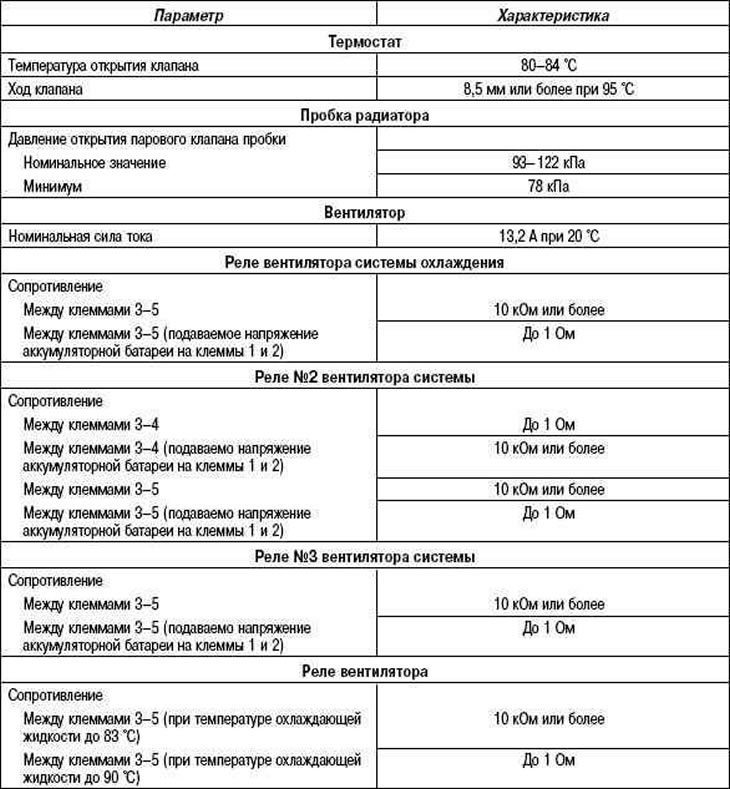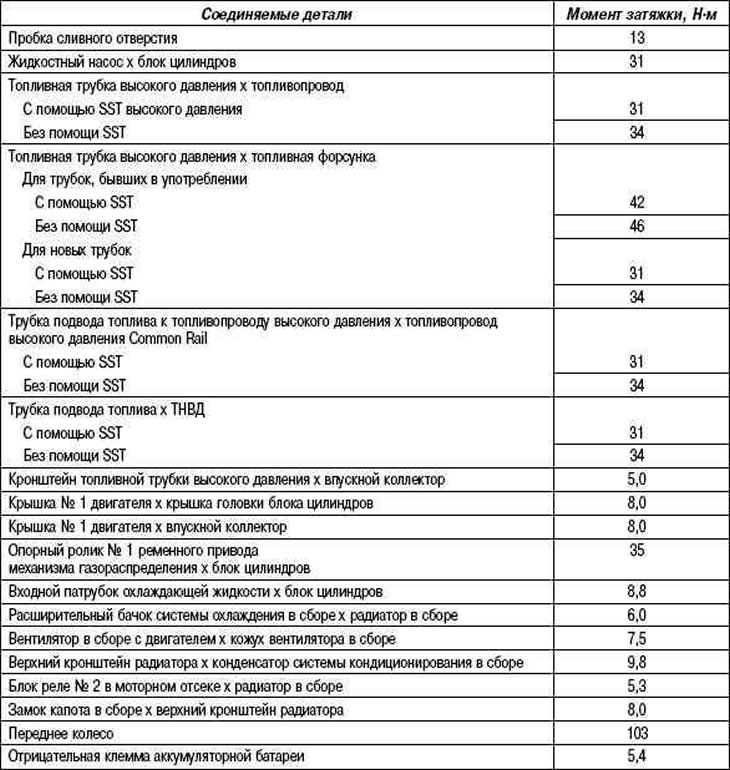Checking for leaks in the cooling system
Remove the top radiator shroud.
Attention! Do not remove the radiator cap when the engine and radiator are at high temperature, otherwise burns may result. Hot coolant and steam may escape from the radiator.

Pic. 2.391. Connecting the tool for pressure testing the cooling system and checking the radiator cap
Fill the radiator with coolant and connect to the filler neck instead of the plug a device for pressure testing the cooling system and checking the radiator plug (expansion tank) (pic. 2.391).
Start and warm up the engine.
Apply pressure to 137 kPa and make sure that the pressure does not decrease.
If the pressure drops, inspect the hoses, radiator and coolant pump. If there are no external signs or traces of coolant leakage, check the heater core, cylinder block and cylinder head.
Install the upper radiator shroud.
Checking the coolant level in the expansion tank
If the engine is cold, the coolant level should be between the marks «LOW» and «FULL». If the coolant level is below the mark «LOW», make sure that there are no leaks in the cooling system and add coolant to the mark «FULL». Use a coolant with an extended drain interval «Toyota Super Long Life Coolant» or similar, based on ethylene glycol, created using stable hybrid organic acids. Do not use amine, nitrite or borate coolants.
Checking the condition of the coolant
Remove the expansion tank cap.
Make sure that the expansion tank cap and the radiator filler neck are free of rust and dirt, and that there are no oil impurities in the coolant. If the coolant is excessively contaminated, it must be replaced.
Install the expansion tank cap.
Checking the radiator core
If the radiator core is clogged, flush it with water or blow it with hot steam, then dry it with compressed air.
Note. When blowing with hot steam, the hose tip must be kept at a sufficient distance from the radiator so as not to damage the core. Observe the distance from the tip to the core according to the following table.

If the ribs of the core are bent, straighten them with a screwdriver or pliers.
Be careful not to get water on the electronic components.
Table 2.21. Technical data for inspection and adjustment work (1CD-FTV engine)

Table 2.23. Rated tightening torque (1CD-FTV engine)

